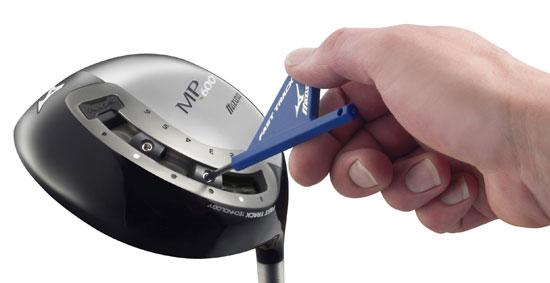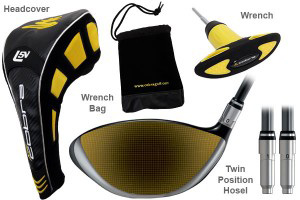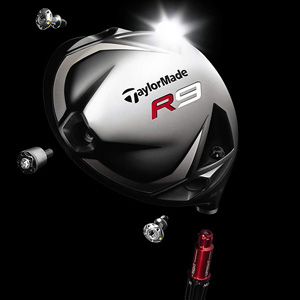Golf drivers 2009: A buyer's guide
What you should know

When buying a driver there are some simple rules to follow - including ones it's very easy to overlook. Much as buying from the high street or even an auction site, might seem more economical, making your purchase after you have swung or tested a range of drivers at a professional facility is our best advice. Shop around for the club that initially gives you good feedback in terms of looks, a consistent strike and accuracy, then get yourself properly custom fitted. Most retailers will knock off the cost of a fitting (around £30-£50) from the cost of a purchase from them or build it in to the price of the club. Distance will come if the club is fitted to make the best of your physique and your swing. |
Does size matter? | |
Buying a new driver is usually a matter of personal taste. A club may have been recommended to you by a fellow golfer or one of the staff in a local pro shop but if it doesn't fall easily on the eye, no amount of addressing it, waggling it or hitting balls on the practice range will convince you it's right for your game. The club has to sit there, ideally on a tee peg, and beg for you to open your shoulders and hit it with confidence. Drivers today have clubheads that are huge (460 cc) compared to those of only a decade ago (around 250 cc), mostly with shiny black surfaces almost as big as a bowling ball. If you're a new golfer, you tend to look for a clubhead that will instil confidence - knowing you're going to make solid contact every time. The more proficient you get, the less need to own the biggest clubhead. If looks and size matter, address a teed up ball, so half the ball sits above the face of the club addressed on the ground. Ask the pro to tape up the face and top of the club head (to avoid possible premature damage) and allow you to hit some practice shots to get the look and feel of the clubhead. | |
What about loft and lie? | |
Many of the top pros use drivers with minimum lofts of 6 or 7 degrees. But we don't recommend this for the amateur who's unable to strike each shot in the same spot with the same swing path every time.
Single figure golfers can get away with lofts from 8-10.5 degrees and the higher up that scale, the more consistent and successful they will become. Newer, less able golfers should sacrifice some distance for accuracy by going for 11 or 12 degree of loft. You will be less likely to slice a ball with added loft. We recommend you're custom-fitted for a driver to ensure the lie - the relationship of the sole of the club to the ground - is flat at address to help put more clubface in contact with the ball at impact. Drivers held with the shaft low and the toe of the club pointing upwards, can drastically reduce the area of the face making contact with the ball Some drivers are also 'toed-in' two or three degrees, which means that at address the flat of the clubface points slightly to the left (for a right-hander). It's hardly detectable to the naked eye, with some clubs but acts as an anti-slice device to keep the ball on target. | |
Are grips and shafts important? | |
Getting the right flex of shaft is crucial. Sadly there's no chart available to automatically choose the right one for you - it's down to trial and error during custom-fitting. As a rule, a regular graphite shaft will suit the average golfer with a moderate swing speed. Usually, the stronger the golfer, the fastest speed is generated and therefore the stiffer the shaft needed for the best results. Ladies, Senior, Regular, Firm and Stiff shafts all have slightly different flexes and 'kick-points' depending on whether you want a low penetrating flight that's easier to control or one that sails high and may be a tad more difficult to control in the wind. Interchangeable weights in the clubhead can also effect the efficiency of the shaft to produce a suitable ball flight. As for grips they depend on the size of your hand. When you hold the club in your left hand (for a right-hander) your fingers should wrap round so the tips barely touch the soft fleshy part of your palm below the thumb. If the tips make an impression get your pro to wrap more tape under the handle or fit a fatter grip. | |
What should you pay? | |
Because many of the latest drivers have a limited shelf life, because of new technology constantly being introduced, prices can tumble within months of their launch. You can buy a new modern driver for between £60 to £100 or pay as much as much as £400 for the latest technology with adjustable weights, face angles and replaceable shafts, complete with a wrench for making your own adjustments. We recommend that you try out a handful of different clubhead shapes on the range before you get fitted and consider a purchase. Perhaps even get a second opinion from a golfer who's a better player and, perhaps, a better judge than you are of what might suit your swing as well as your pocket. |





